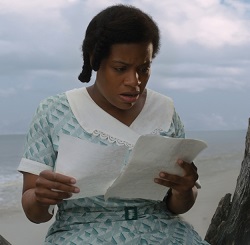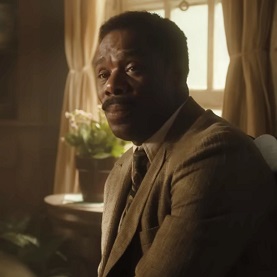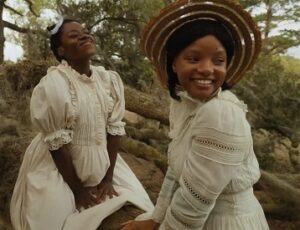The Color Purple
 In 1985, Steven Spielberg gave us “The Color Purple,” his masterful adaptation of Alice Walker’s 1982 novel about the struggles of an African American woman in Deep South during the first part of the 20th century. It was a critically acclaimed huge hit, and to this day, it is considered one of the greatest films ever made. It was indeed my #1 film of the year for 1985.
In 1985, Steven Spielberg gave us “The Color Purple,” his masterful adaptation of Alice Walker’s 1982 novel about the struggles of an African American woman in Deep South during the first part of the 20th century. It was a critically acclaimed huge hit, and to this day, it is considered one of the greatest films ever made. It was indeed my #1 film of the year for 1985.
The history
Twenty years later, “The Color Purple” was adapted for the Broadway stage as a musical, with music and lyrics by Allee Willis, Stephen Bray, and pop/jazz performer Brenda Russell (perhaps most widely known for her 1988 hit “Piano in the Dark”). Now, that musical has been adapted to the big screen by Ghanaian director Blitz Bazawule. So, before you say you aren’t interested in seeing a ripoff remake of the Spielberg classic, keep in mind that here you are watching a filmed adaptation of the musical – not a remake of the Spielberg picture.
But just to confuse the issue, Spielberg (along with Oprah Winfrey, a co-star of the 1985 feature) serves as executive producer this time around. And I can certainly understand there might be some confusion, for just two years ago Spielberg did direct a strong but ultimately unnecessary remake of the classic 1961 motion picture musical “West Side Story.” That is not what he has done here.
Unavoidable comparison
Bazawule’s “The Color Purple” stands on its own as an excellent big-screen musical, requiring no knowledge of the 1985 production. Unfortunately, the new film’s only downfall is that anyone who has seen the Spielberg original – which is, let’s face it, absolutely everyone over the age of 55, and half of those younger than 55 – will feel the need to compare and contrast. So, the bottom line is that, in this case, comparisons are unavoidable – in contrast to, say, Martin Scorsese’s 1991 big studio hit “Cape Fear,” which was a remake of a 1962 film seen by almost no one.
 The cast
The cast
In the new “Color Purple,” the meek, subservient protagonist Celie (the old Whoopi Goldberg role) is filled by American Idol season three winner Fantasia Barrino, whose performance is so natural and moving one wonders why it’s taken Hollywood 19 years from her television win to “discover” her. Her husband and master (who requires Celie refer to him as “Mister,” rather than his real name) is played by Colman Domingo. And Celie’s strong-willed friend Sofia is played by Danielle Brooks, in the old Oprah Winfrey role.
Perhaps because this “Color Purple” is a musical, the role of visiting blues singer and showgirl Shug Avery is expanded into the second most prominent part in the production. She’s played by the great Taraji P. Henson, most known for her non-musical performance in “Hidden Figures.” In the ’85 film, the much smaller role was played by Margaret Avery, whose singing was dubbed by a so-called ghost singer. I enjoyed the expanded role for Shug, although it comes at the expense of the Sofia character, whose part is comparatively downsized.
Strong-willed women
And if Sofia is a strong-willed female role model for young Celie, Shug takes “strong-willed” to a whole other level. In the Spielberg original, Mister kept Celie so isolated from the outside world, she was rarely privy to female role models. This time around, she experiences many such women. The result is to soften the malice and thundering hand of Mister. In 1985, Danny Glover’s “Mister” was downright frightening every time he was on screen. Here, we can’t help but wonder when Celie will give Mister his comeuppance. Even those unfamiliar with the 1985 film can feel it coming. Hence, the dinner table sequence – the original film’s defining scene – is relegated to just one in a string of denouements which occupy the final half hour of screen time.
 Different emphasis
Different emphasis
In a way, that’s perfectly fine. Since the Mister character isn’t as striking this time around, his downfall is less impressive or important. In fact, Mister and Celie continue to see one another around town as the musical production winds down. The defining scene of Bazawule’s “The Color Purple” centers around the emotional reunion of Celie with family members she hasn’t seen in many years. These later developments were part of Walker’s novel and Spielberg’s film but were de-emphasized.
Role of religion
I also like the fact that religion plays a major role in “The Color Purple.” Walker wrote the novel that way, but the inclusion of a bevy of original gospel music draws us and the characters closer to God in a way that few films have done recently. While any recognition of God, or a higher power, is absent from most films these days – even from “The Polar Express,” a film about a holiday which would not even exist without the birth of Jesus – “The Color Purple” is not encumbered by an outward display of respect for God.
Black role models
And on a final note, as in 1985, much has been made about the negative depiction of African American males in “The Color Purple;” that Walker/Spielberg/Bazawule provide no sympathetic black males. That point is true, but I don’t consider it a complaint. Slavery only just ended with the conclusion of the Civil War in 1865. When black men were given their freedom, many of them physically and mentally abused their wives, as this was their only available role model of the male as “master of his house and family.” By the early 1900s, most black males in the Deep South were still continuing this practice of strong-handed dominance. In my opinion, “The Color Purple” is best enjoyed as a look back on a past culture and should not be interpreted as any sort of commentary on today’s society.
Stands on its own
So, what’s the bottom line? Even though comparisons are inevitable – and perhaps because they are – I like the fact that this “Color Purple” stands on its own. As a musical, this film is its own entity, which owes nothing to the 1985 film. In contrast, Spielberg’s “West Side Story” almost begged such comparison because it was a scene-by-scene remake. “The Color Purple” is not. This production is more emotional and upbeat. Yes, it cushions the work of Walker and Spielberg, but as a musical, it must. “The Color Purple” is one of the best crowd-pleasing films of this year!
Andy Ray‘s reviews also appear on https://townepost.com/.